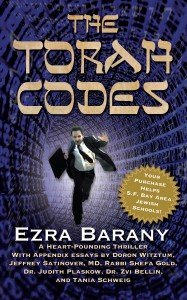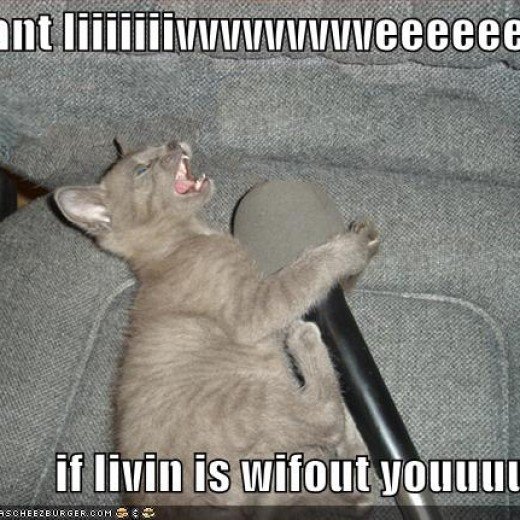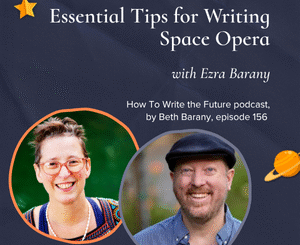Get Your Book in Libraries with a One-Sheet
What the heck is a “one-sheet”? More importantly, will the librarian ever find out that my checked out copy of Green Eggs and Ham is 17 years overdue?
Last time we talked about the laddered approach to getting your book in libraries. That means first getting reviews for your book on Amazon and people’s blogs, showing those reviews to get reviews from magazines and newspapers, and then showing those magazine and newspaper reviews to get reviews in the sources libraries pull books from (see the previous post How to Get Your Book in Libraries).
Getting reviewed on Amazon and blogs is as easy as getting friends to read your book and post their thoughts. When choosing which magazines and newspapers to review your book, consider looking at Book Review Index’s excel spreadsheet. The spreadsheet shows all the magazines that the Book Review Index collects reviews from. The spreadsheet also has a column describing which topics each magazine covers, so you can easily find the magazine that has your audience and send your book to the appropriate magazines along with a cover letter or “one-sheet.”
There are many different kinds of “one-sheets.” A one-sheet for reviewers and libraries can contain the contact’s name, a hook, some reasons why readers want your book, your book blurb, a call to action, reviews, and a bio. You’ll send the one-sheet to prospective reviewers and to librarians. Be sure to include the book’s genre and for reviewers a page count or word count.
The hook should say why your book is important. In Nancy K. Humphries’ ebook Marketing Your Book to Libraries, she suggests using the tone of your book to keep your one-sheet interesting. If I were to match the tone of my thriller The Torah Codes, though, I’d end up using my protagonist’s voice and the hook would be something like, “If you don’t review my book, I will find you. And I will kill you.”
Probably not the best way to address a fellow hominid.
But when you’re sending the one-sheet to librarians (instead of reviewers) it makes sense to not be as formal as with reviewers. Don’t refer to yourself in the third person. Be less formal and use first person as Nancy Humphries suggests. Something along the lines of “My Da Vinci Code-type thriller has been an Amazon bestseller ever since December 2011.”
Listing why readers want to read your book is optional. Even just a short list of bullet points should do it. Your book blurb should be the same as the short description of your story on the back of your book.
When adding reviews to your one-sheet, there’s something to consider. There are two kinds of reviews: descriptive and evaluative. Descriptive reviews just summarize what your book’s about. Evaluative reviews judge how good your book is.
When sending out your book to a magazine or newspaper, first check to see what kind of reviews they give. If they only do descriptive reviews, put sample descriptive reviews in your one-sheet. If they do evaluative reviews, put in samples of your most prestigious reviews that say how great your book is.
Each time you get a new review from a higher class source, update your one-sheet. Replace that review from Amazon with your recent review from the San Francisco Chronicle.
The reviews you put in your one-sheet should be excerpts that last no more than three sentences. Keep them brief. Imagine you’re the one receiving the one-sheet, and you’ve got 1,327 one-sheets to look through today to decide which books your magazine will actually review. As the employee of that magazine, empty space on that one-sheet will make you a much happier worker. Less to read, less work.
Time to flex your one-sheet muscle and start practicing. I’ll go first.
***
Dear Mr. Buster,
My bestselling thriller The Torah Codes is a Jewish version of The Da Vinci Code.
A reclusive computer programmer, Nathan Yirmorshy, pounds out ones and zeros in the quiet of his home while his landlord secretly watches from behind a two-way mirror. When an intercepted note connects the landlord to a secret society, and a detective ends up dead, Nathan must abandon his home and everything familiar to him, open his heart to a tarot reader he has never met, and trust her with his life–just as the ancient scriptures have foretold.
The Torah Codes is:
- Exciting – The page-turning plot with twists and turns at every chapter keeps the readers at the edge of their seats
- Controversial – The thriller slips in scientific proof of God’s existence without being preachy
- A Discussion Builder – An appendix of essays by rabbis, doctors, and physicists discuss the themes of the book, specifically the Bible codes and the Shekinah, the female aspect of God.
Thank you for your consideration of reviewing my thriller. Feel free to contact me if your have any questions.
Ezra
The Torah Codes, Thriller, 70,000 words, 375 pages
“This book is a page-turner that I found very difficult to put down. The book has kind of a Dan Brown Da Vinci Code feel to it. The appendix is good reading as well as food for thought and should not be skipped. The author is donating a portion of the book sales to the San Francisco Bay Area Jewish Schools. A good book and helping a good cause is a winning combination!”” A.R. Cook, The Book Review
“The pages seem to turn themselves. But what the book really is, in the end, is a bit of well packaged theology. What truly drives the book is not the cleverness, determination, courage, cowardice, or contrivances of any of the characters. Rather, the book is really about who Nathan and his girlfriend are meant to be. The force behind the book is a strain of Jewish mysticism that allows for coincidence and fate. Underlying it all is the faith that, in spite of everything, God wills us to live in righteousness. In reading the book I learned something new about religious belief, got something to think about, and had a great time in the process.” Jonathan Berman, Amazon Customer
“The visceral suspense is a framework from which the writer dangles a far more intriguing intellectual, even spiritual, carrot…Let me put this quite baldly: the question before us is not a fictional one. If The Torah Codes describes a real phenomenon, then we are talking about statistical evidence that the scriptures are indeed supernatural that is to say, holy, inspired by a force with, at the very least, a god’s-eye-view of history. Including, one might presume, future history.” Ien Nevins, Berkshire Fine Arts book review
Ezra Barany has been fascinated by codes and puzzles ever since he was a little tot. He started writing suspense and thriller stories in college. In March 2011, Ezra unleashed his first novel The Torah Codes. Ezra has been a high school physics teacher, fiction writing teacher, songwriting teacher, ESL teacher to French children and pop performer. In his free time, he writes mushy love songs inspired by his wife and book coach Beth Barany. Ezra now lives in the San Francisco Bay Area where he is working on his next book.
***
There it is! You can also see a quick draft of how my one sheet would look here. For more info on how to write a one sheet, check out Suzanne Hartman’s article. Also check out some sample one-sheets, one designed to show off the author instead of the book, and one designed for a non-fiction book here and here.
Your turn to make your own!
***
 Book marketing mentor, Ezra Barany is the author of the award-winning bestseller, The Torah Codes. Contact Ezra today to begin the conversation on how he can help you now via Facebook, Twitter, or contact him through this blog, or email: EZRA at THETORAHCODES dot COM.
Book marketing mentor, Ezra Barany is the author of the award-winning bestseller, The Torah Codes. Contact Ezra today to begin the conversation on how he can help you now via Facebook, Twitter, or contact him through this blog, or email: EZRA at THETORAHCODES dot COM.









Really useful info. People ask me all the time how to get reviews and into libraries, etc. I have to admit, it’s probably the hardest element of being an Indie author today.
This is great! Thanks for the info–I’ll definitely give it a try. I love libraries and would love to have my books available to more readers.
Jason, I’m glad it’s useful to you! And I agree it’s one of the hardest elements of being an indie author.
T.W., thanks for the comment! I believe, however, the best way to be found in the library is to make sure you have a searchable title. See my post on how to come up with a good title.
http://writersfunzone.com/blog/2012/01/18/3-elements-of-a-good-book-title-that-sells/
If, for example, the book title is “Grenwatipuppycom,” I’ll bet you anything no one’s going to search that word on a library database unless they’ve already heard of the book before. (There’s no such book, by the way.)
The only other way such a book will be found is if people wandering in the same section see the spine on the shelf. And, yeah, maybe I’d be curious enough to see what the heck kind of book is “Grenwatipuppycom.”
And if people don’t find the book often enough to check it out of the library, it’ll be shelved on the “books for 25 cents” cart.
To your success, Jason and TW!
Ezra